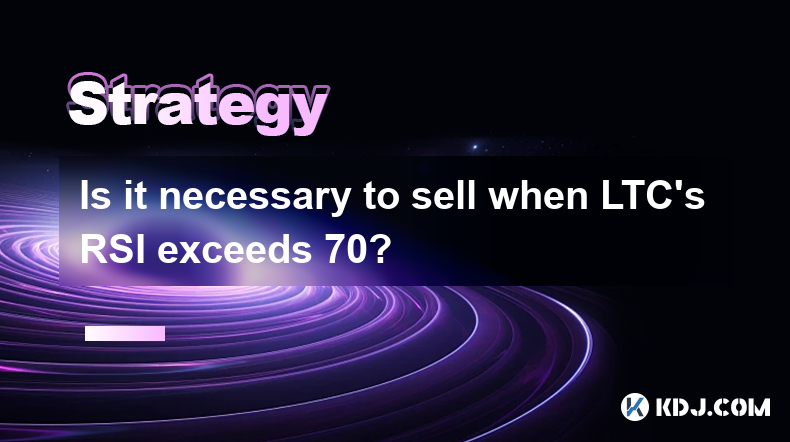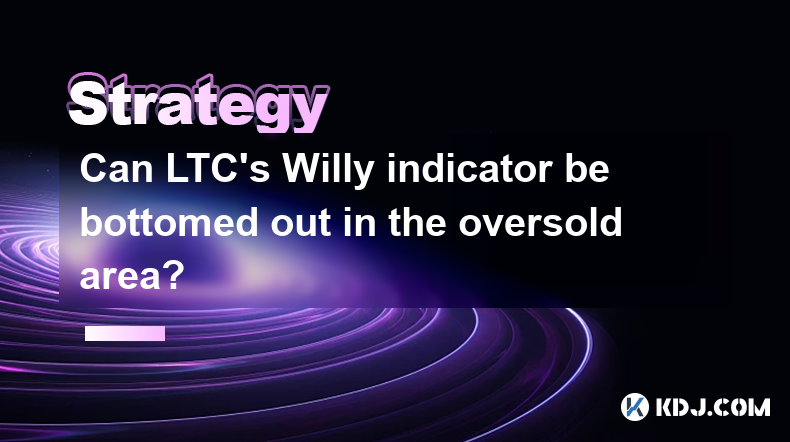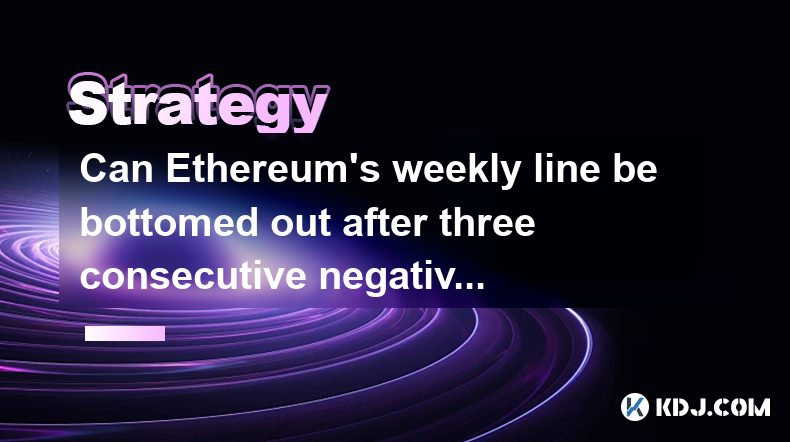-
 Bitcoin
Bitcoin $92,797.8357
-0.08% -
 Ethereum
Ethereum $1,758.6497
-1.57% -
 Tether USDt
Tether USDt $1.0000
-0.03% -
 XRP
XRP $2.1873
-2.17% -
 BNB
BNB $598.4009
-1.60% -
 Solana
Solana $150.2791
0.45% -
 USDC
USDC $1.0000
0.01% -
 Dogecoin
Dogecoin $0.1766
-1.22% -
 Cardano
Cardano $0.7008
0.33% -
 TRON
TRON $0.2457
0.21% -
 Sui
Sui $3.0960
4.07% -
 Chainlink
Chainlink $14.7276
-1.04% -
 Avalanche
Avalanche $22.1706
-0.56% -
 UNUS SED LEO
UNUS SED LEO $9.2165
1.99% -
 Stellar
Stellar $0.2700
0.85% -
 Shiba Inu
Shiba Inu $0.0...01339
-0.71% -
 Toncoin
Toncoin $3.1385
1.26% -
 Hedera
Hedera $0.1838
0.91% -
 Bitcoin Cash
Bitcoin Cash $349.7807
-1.68% -
 Polkadot
Polkadot $4.0587
-0.64% -
 Litecoin
Litecoin $82.2851
-1.55% -
 Hyperliquid
Hyperliquid $18.1461
-1.67% -
 Dai
Dai $1.0001
0.00% -
 Bitget Token
Bitget Token $4.4128
-3.05% -
 Ethena USDe
Ethena USDe $0.9994
0.02% -
 Pi
Pi $0.6509
-2.49% -
 Monero
Monero $225.8054
-1.68% -
 Uniswap
Uniswap $5.8067
-2.82% -
 Pepe
Pepe $0.0...08608
-4.14% -
 Aptos
Aptos $5.3975
2.40%
Is it necessary to sell when LTC's RSI exceeds 70?
Selling LTC when its RSI exceeds 70 isn't necessary; consider market trends, volume, and other indicators for a comprehensive trading decision.
Apr 24, 2025 at 07:22 am

Is it necessary to sell when LTC's RSI exceeds 70?
The Relative Strength Index (RSI) is a popular momentum oscillator used by traders to gauge the speed and change of price movements in the cryptocurrency market, including Litecoin (LTC). When the RSI value exceeds 70, it is generally considered an indication that an asset might be overbought, suggesting a potential price correction or reversal. However, the necessity of selling Litecoin solely based on this signal requires a deeper understanding of the RSI and its implications in the context of LTC trading.
Understanding the RSI
The RSI is calculated based on the average gain and loss of an asset over a specific period, typically 14 days. The formula for RSI is as follows:
[ \text{RSI} = 100 - \left( \frac{100}{1 + \text{RS}} \right) ]
Where RS (Relative Strength) is the average gain divided by the average loss. The RSI value ranges from 0 to 100, with readings above 70 indicating overbought conditions and readings below 30 suggesting oversold conditions.
Overbought Conditions and LTC
When the RSI of LTC exceeds 70, it signals that the recent price movements have been significantly bullish, potentially leading to an overbought condition. Traders often interpret this as a warning that the price might soon experience a pullback or correction. However, this does not automatically mean that it is necessary to sell LTC at this point.
The Importance of Context
The decision to sell LTC when its RSI exceeds 70 should not be made in isolation. Several factors need to be considered:
- Market Trends: The broader market trend can influence whether an RSI reading above 70 is a reliable sell signal. In a strong bull market, LTC might remain overbought for an extended period.
- Volume: High trading volume accompanying the RSI reading can confirm the strength of the trend. If volume is low, the RSI signal might be less reliable.
- Other Indicators: Using additional technical indicators, such as Moving Averages, MACD, or Bollinger Bands, can provide a more comprehensive view of LTC's price action.
- Fundamental Analysis: News, developments, and the overall sentiment towards Litecoin can impact its price movements, potentially overriding technical signals.
Historical Performance of LTC and RSI
Analyzing historical data can provide insights into how Litecoin has reacted to RSI readings above 70. For instance, during certain periods, LTC might have continued its upward trend even after the RSI indicated overbought conditions. This suggests that historical performance should be considered when deciding whether to sell based on RSI.
Risk Management Strategies
Instead of automatically selling when LTC's RSI exceeds 70, traders can employ risk management strategies to mitigate potential losses:
- Setting Stop-Loss Orders: Placing a stop-loss order at a predetermined price level can help limit losses if the price does reverse.
- Partial Selling: Selling a portion of LTC holdings can allow traders to lock in some profits while leaving room for further gains if the price continues to rise.
- Diversification: Spreading investments across different cryptocurrencies can reduce the impact of a potential price drop in LTC.
Psychological Aspects of Trading
The decision to sell based on RSI readings can also be influenced by psychological factors. Fear of missing out (FOMO) or fear of losing gains can lead traders to make impulsive decisions. It is crucial to maintain a disciplined approach and not let emotions dictate trading actions.
Case Studies and Examples
Examining specific instances where LTC's RSI exceeded 70 can provide practical insights. For example, in early 2021, Litecoin's RSI hit 75, but the price continued to rise for another two weeks before a correction. This case highlights that RSI signals should be used in conjunction with other analysis tools.
Implementing RSI in Trading Platforms
To effectively use RSI in trading Litecoin, traders can follow these steps:
- Choose a Trading Platform: Select a platform that supports technical analysis, such as Binance, Coinbase Pro, or TradingView.
- Add RSI Indicator: On the chosen platform, navigate to the charting section and add the RSI indicator with a 14-day period setting.
- Monitor RSI Levels: Keep an eye on the RSI values, particularly when they approach or exceed 70.
- Combine with Other Tools: Use additional indicators and analysis methods to confirm or refute the RSI signal.
- Execute Trades: Based on the comprehensive analysis, decide whether to sell, hold, or buy more LTC.
Conclusion on Selling LTC Based on RSI
While an RSI reading above 70 for Litecoin can be a useful signal, it is not necessary to sell solely based on this indicator. A holistic approach that considers market trends, volume, other technical indicators, and fundamental analysis is essential for making informed trading decisions. Traders should also employ risk management strategies and remain aware of psychological biases that can influence their actions.
FAQs
Q1: Can the RSI be used for short-term trading of LTC?
A1: Yes, the RSI can be used for short-term trading of LTC. Traders often use shorter periods, such as 7 or 9 days, to generate more frequent signals. However, short-term trading based on RSI should be combined with other indicators to increase reliability.
Q2: How does the RSI differ from other momentum indicators for LTC?
A2: The RSI focuses on the speed and change of price movements, providing a value between 0 and 100. Other momentum indicators, like the MACD, use different calculations and may offer different insights. For example, MACD can highlight potential trend reversals through crossovers, while RSI focuses on overbought and oversold conditions.
Q3: Is there a specific time of day that is best for checking LTC's RSI?
A3: There is no specific time of day that is universally best for checking LTC's RSI. However, traders often find it useful to monitor RSI during high liquidity periods, such as during the overlap of major trading sessions (e.g., when both the New York and London markets are open).
Q4: Can the RSI be used to predict long-term trends in LTC's price?
A4: The RSI is primarily a short to medium-term momentum indicator and is not designed to predict long-term trends in LTC's price. For long-term analysis, traders may consider using other tools like moving averages or fundamental analysis.
Disclaimer:info@kdj.com
The information provided is not trading advice. kdj.com does not assume any responsibility for any investments made based on the information provided in this article. Cryptocurrencies are highly volatile and it is highly recommended that you invest with caution after thorough research!
If you believe that the content used on this website infringes your copyright, please contact us immediately (info@kdj.com) and we will delete it promptly.
- Analysts say Trump's import tariffs expose vulnerabilities in the US bond market, highlighting Bitcoin's unique economic properties
- 2025-04-24 22:20:12
- PEPE pulls back 5% after hitting resistance near $0.00000936. Whale accumulation hints at a potential recovery toward $0.00001025 and possibly $0.00001584.
- 2025-04-24 22:20:12
- Bitcoin (BTC) dominance as a haven within crypto may be up for debate, but within crypto it's hardly questionable
- 2025-04-24 22:15:12
- Record Profit Surge: Revolut Doubles Annual Earnings to $1.3 Billion
- 2025-04-24 22:15:12
- XRP Ledger Faced a Major Security Breach Involving xrpl.js JavaScript Library
- 2025-04-24 22:10:13
- Trump's Meme Coin Soars 70% After Exclusive Investor Dinner Announcement
- 2025-04-24 22:10:13
Related knowledge

Is the increase in LINK's net outflow from exchanges a positive signal?
Apr 24,2025 at 02:35pm
The recent increase in LINK's net outflow from exchanges has sparked discussions within the cryptocurrency community about its implications for the token's future performance. LINK, the native token of the Chainlink decentralized oracle network, has seen a notable shift in its net outflow from exchanges, which many interpret as a positive signal. This a...

Is LTC's UTXO age distribution useful for judging buying and selling points?
Apr 23,2025 at 05:42pm
Is LTC's UTXO age distribution useful for judging buying and selling points? Understanding the UTXO (Unspent Transaction Output) age distribution of Litecoin (LTC) can provide valuable insights into the behavior of its holders and potentially help in making informed decisions about buying and selling points. The UTXO age distribution refers to the age o...

Can LTC's Willy indicator be bottomed out in the oversold area?
Apr 24,2025 at 01:43pm
Understanding the Willy IndicatorThe Willy indicator, also known as the Willy ratio, is a technical analysis tool used in the cryptocurrency market to gauge the sentiment of a particular asset, in this case, Litecoin (LTC). It is calculated by dividing the total trading volume of an asset by its market capitalization. The resulting ratio helps traders u...

Can Ethereum's weekly line be bottomed out after three consecutive negatives?
Apr 24,2025 at 10:56am
In the dynamic world of cryptocurrencies, understanding market trends and patterns is crucial for investors and traders alike. One of the significant aspects of technical analysis in this field is the examination of weekly line charts, particularly for major cryptocurrencies like Ethereum. The question of whether Ethereum's weekly line can be bottomed o...

Where can I find the current average holding cost of XRP in the market?
Apr 22,2025 at 11:00pm
Where can I find the current average holding cost of XRP in the market? Finding the current average holding cost of XRP in the market can be a challenging task, as this information is not readily available on most mainstream cryptocurrency platforms. However, there are several methods and resources that you can use to estimate this figure. In this artic...

What should I do if LINK's NVT signal diverges?
Apr 24,2025 at 04:14am
When the NVT (Network Value to Transactions) signal for LINK (Chainlink) diverges, it can be a significant indicator for investors and traders to take action. The NVT ratio is a valuation metric used in the cryptocurrency space to assess whether a cryptocurrency is overvalued or undervalued based on its network activity. A divergence in the NVT signal s...

Is the increase in LINK's net outflow from exchanges a positive signal?
Apr 24,2025 at 02:35pm
The recent increase in LINK's net outflow from exchanges has sparked discussions within the cryptocurrency community about its implications for the token's future performance. LINK, the native token of the Chainlink decentralized oracle network, has seen a notable shift in its net outflow from exchanges, which many interpret as a positive signal. This a...

Is LTC's UTXO age distribution useful for judging buying and selling points?
Apr 23,2025 at 05:42pm
Is LTC's UTXO age distribution useful for judging buying and selling points? Understanding the UTXO (Unspent Transaction Output) age distribution of Litecoin (LTC) can provide valuable insights into the behavior of its holders and potentially help in making informed decisions about buying and selling points. The UTXO age distribution refers to the age o...

Can LTC's Willy indicator be bottomed out in the oversold area?
Apr 24,2025 at 01:43pm
Understanding the Willy IndicatorThe Willy indicator, also known as the Willy ratio, is a technical analysis tool used in the cryptocurrency market to gauge the sentiment of a particular asset, in this case, Litecoin (LTC). It is calculated by dividing the total trading volume of an asset by its market capitalization. The resulting ratio helps traders u...

Can Ethereum's weekly line be bottomed out after three consecutive negatives?
Apr 24,2025 at 10:56am
In the dynamic world of cryptocurrencies, understanding market trends and patterns is crucial for investors and traders alike. One of the significant aspects of technical analysis in this field is the examination of weekly line charts, particularly for major cryptocurrencies like Ethereum. The question of whether Ethereum's weekly line can be bottomed o...

Where can I find the current average holding cost of XRP in the market?
Apr 22,2025 at 11:00pm
Where can I find the current average holding cost of XRP in the market? Finding the current average holding cost of XRP in the market can be a challenging task, as this information is not readily available on most mainstream cryptocurrency platforms. However, there are several methods and resources that you can use to estimate this figure. In this artic...

What should I do if LINK's NVT signal diverges?
Apr 24,2025 at 04:14am
When the NVT (Network Value to Transactions) signal for LINK (Chainlink) diverges, it can be a significant indicator for investors and traders to take action. The NVT ratio is a valuation metric used in the cryptocurrency space to assess whether a cryptocurrency is overvalued or undervalued based on its network activity. A divergence in the NVT signal s...
See all articles























































































